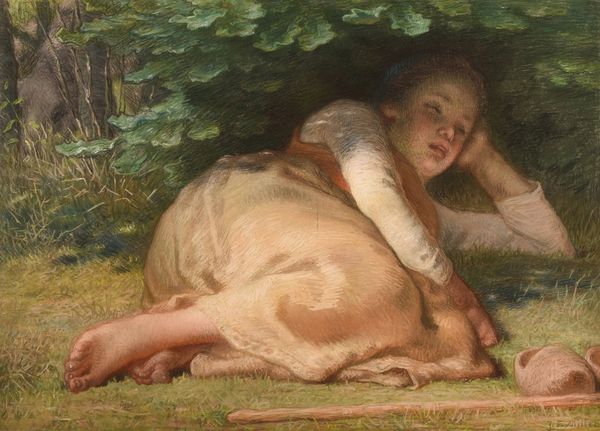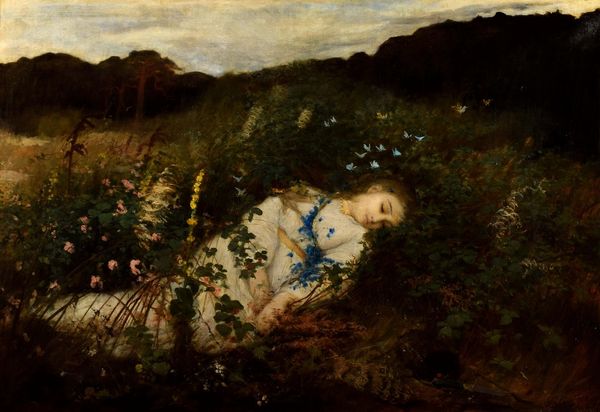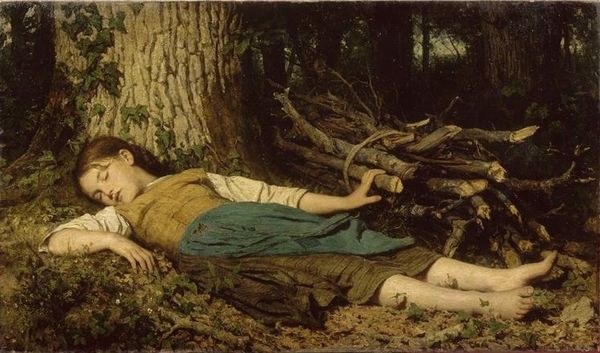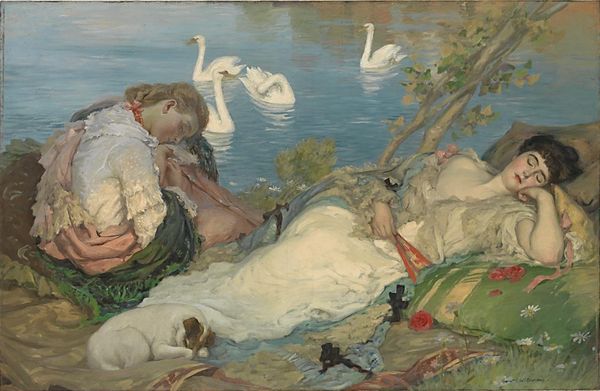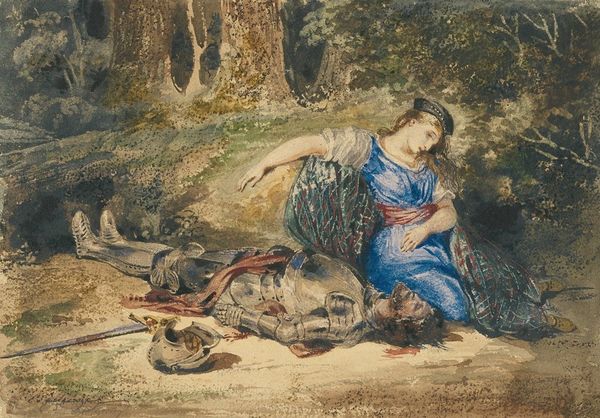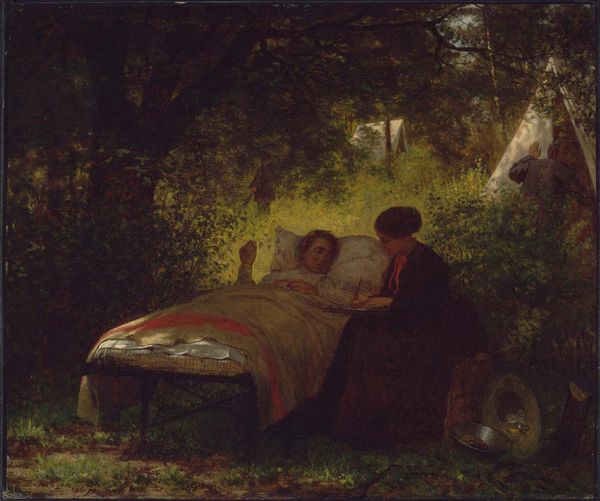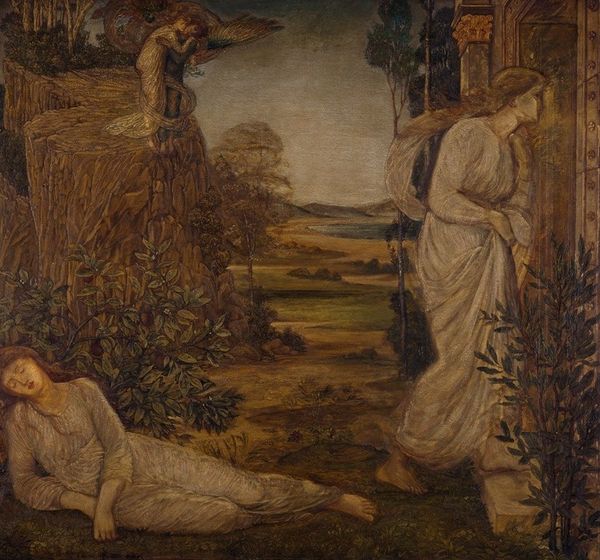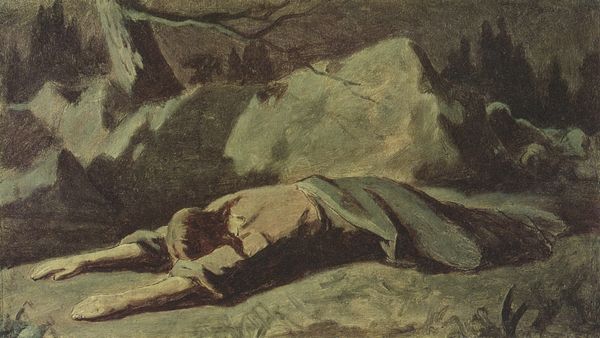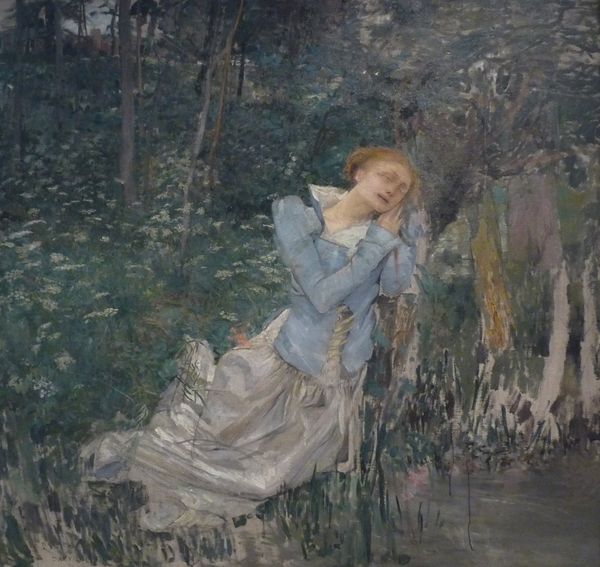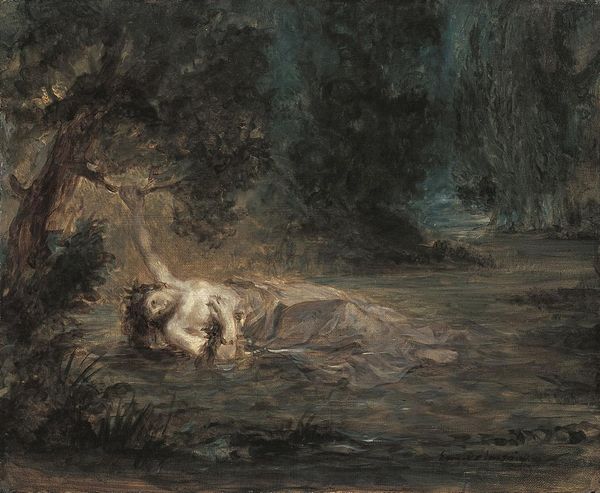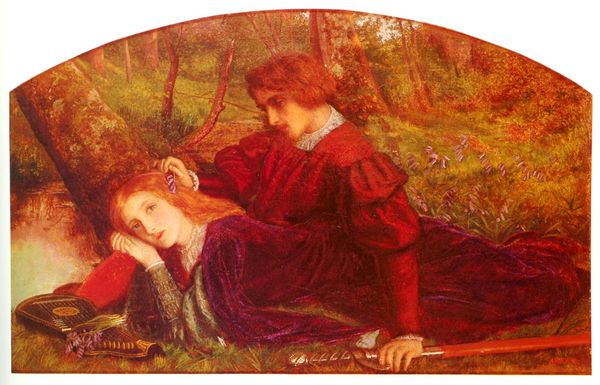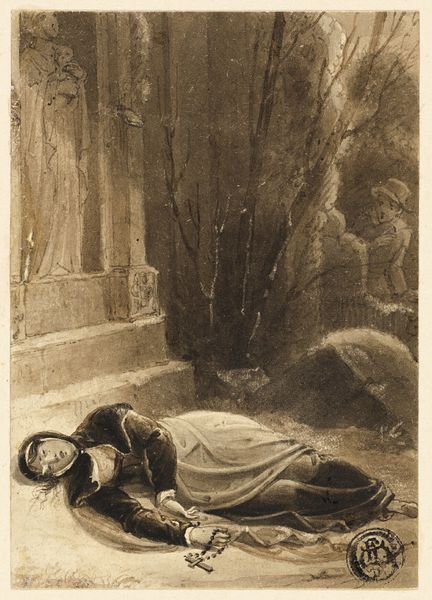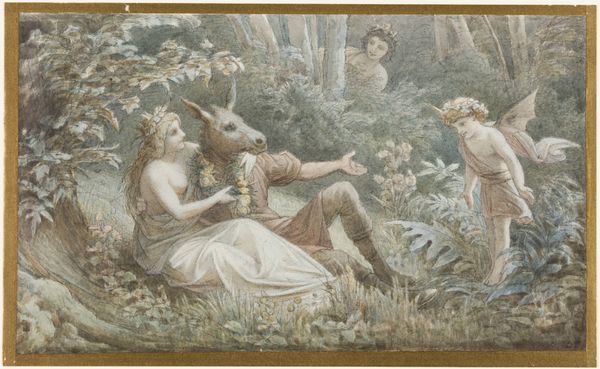
Dimensions: support: 610 x 641 mm frame: 851 x 908 x 72 mm
Copyright: CC-BY-NC-ND 4.0 DEED, Photo: Tate
Editor: So, this is "The Woodman's Child" by Arthur Hughes. I'm immediately struck by the contrast between the sleeping child in the foreground and the figures working in the background. What elements of the composition stand out to you? Curator: The spatial organization is quite deliberate. Note how the artist uses the diagonal of the child's body to lead the eye toward the background, creating a sense of depth. The color palette also directs our attention, with the muted tones of the forest contrasting with the vibrant colors of the child's clothing. Editor: That's interesting. I hadn't considered the diagonal line. What does that signify in your opinion? Curator: It could be seen as a visual pathway, leading us from innocence to the world of labor and perhaps, by extension, the transient nature of childhood. Editor: I see it now, thank you. I'll never look at this the same way! Curator: Indeed. The artist's careful arrangement invites multiple interpretations.
Comments
tate 7 months ago
⋮
http://www.tate.org.uk/art/artworks/hughes-the-woodmans-child-t00176
Join the conversation
Join millions of artists and users on Artera today and experience the ultimate creative platform.
tate 7 months ago
⋮
A child sleeps while her parents are at work in the woods beyond. Such a scene is a development of the genre paintings of Wilkie and Mulready, who had been pre-eminent in establishing the Victorian taste for depictions of everyday life. The Pre-Raphaelite virtue of truth to nature is thoroughly honoured in this picture, where the various elements are painstakingly observed as if they were a still life. The soft autumn colours perhaps suggest ideas of mortality. However, the child is in no immediate danger, watched over by a squirrel and a robin. Hughes very probably used his own daughter as the model for the sleeping girl. Gallery label, September 2004
